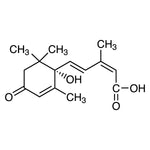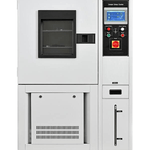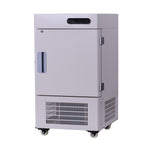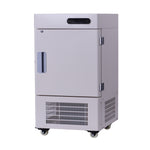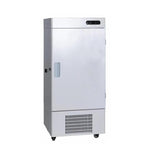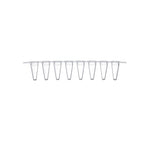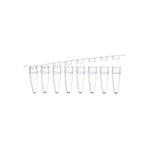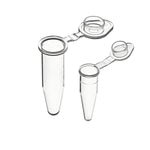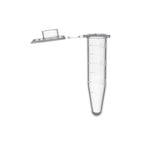You have no items in your shopping cart.

Serological pipettes are an integral component in labs that need accuracy when performing measurements. Most pipettes are calibrated in milliliters, usually clearly marked for easier reading. If you want to learn more about serological pipettes, this post is definitely for you.
Pipettes are available in glass or plastic, and for this post’s purpose, we will focus on how to use different types of serological pipettes. Here is what you should know.
How do they work?
As mentioned earlier, these pipettes mainly find use in labs to transfer liquids in labs. Ideally, these pipettes comprise side graduations that help measure liquids (in ml) for aspiration or dispensing. Pipettes are recommended for lab use to measure even the most negligible liquid increment levels. Besides the apparent purpose of measuring liquids, here are some other uses:
- Combining chemical solutions and reagents
- Mixing suspensions
- Transfer of cells for expansion or empirical analysis.
The Different Categories of Serological Pipettes
Serological pipettes are made of plastic or glass. Ideally, serological pipettes are available in three distinct classifications:
1. Open-End
These are uniquely-designed pipettes with an open-end to allow highly viscous fluids. With this open-end design, you can easily dispense or aspirate viscous liquids easily and quickly. As such, the fast release and fill rates render these apparatus suitable for use with cosmetics, oils, sludge, pains, and cell and food culture applications. These pipettes are polystyrene plastic and offer a safer glass pipette alternative.
The use of these pipettes significantly reduces fluid and liquid-vapor contamination due to their fiber filter plugs found at the pipette tip's end. Ideally, these non-pyrogenic apparatus are thoroughly sterilized through a unique process called gamma irradiation.
What’s more, these apparatus come wrapped in thermoformed plastic/paper peel packages and are available in various calibrations, including 1, 2, 5, and a larger 10 ml calibration. What’s more, they are color-coded to allow easy identification, effectively making them a suitable option for easy and efficient liquid handling.
2. Aspirating Serological Pipettes
These are fully transparent pipettes that come with no graduations. Aspirating pipettes are distinctly designed to mix and transfer fluids in various applications like pipette or vacuum aspiration processes.
Typically, these apparatuses are single-use, non-plugged, non-pyrogenic pipettes such as the 1 ml Disposable Aspirating Pipets from Biofargo, and manufacturers pack and wrap them (individually) in special thermoformed plastic to help avoid contamination. Also, they are specially sterilized using gamma irradiation and fulfil the recommended sterility assurance level (SAL) provisions.
3. Bacteriological Pipettes
These are other serological pipettes are commonly used for the examination of dairy products and milk products. They are made from polystyrene and come in sizes of 2.2 and 1.1 ml. like the other serological pipettes, gamma irradiation is used for proper sterilization.
Bacteriological pipettes are single use; non-pyrogenic apparatus comes with a unique fiber filter to prevent contamination of liquid samples and are packed in specialized thermoformed plastic/paper to prevent damage.
How do you use these pipettes?
Serological pipettes are specially made for use as 'blowout' pipettes. The apparatus features graduations located close to the tip's end. Furthermore, the rubber bulbs often attached to the tips work to blow out any excess liquid using gravitational pressure or air.
Blowout pipettes are usually labelled with 'double rings.' Users must use the attached bulb that usually exerts air pressure to facilitate a blowout and get every drop of the solution/liquid. Alternatively, there are also single-ringed pipettes (non-blow out) pipettes that allow the user to drain the entire tip.
The best way to use serological pipettes starts by understanding how they work. Ideally, these pipettes are used in labs to transfer liquids in standard measurements ranging from 1ml-50ml.
If you want to understand how serological pipettes work, here are several tips and techniques you should remember when using the pipettes:
1. Reading Serological Pipette Measurements and Volumes
When reading measurements and volume, here is what you should know:
- You should note the lower meniscus part level after loading the pipette. The meniscus usually forms at the liquid column’s top.
- Look at the apparatus at normal eye level to acquire the accurate readings
- It would be best if you held the pipette at a precise straight form-right angle to where you stand (floor).
2. Dispensation and Aspiration of Fluids
Using the primitive mouth pipetting method to transfer liquids is no longer recommended because of the risk of users accidentally consuming harmful liquids. Alternatively, you can use a pump or bulb, as it is relatively safer.
The bulb usually helps transfer less specific liquid amounts, while using the pump usually facilitates the transfer of accurate fluid amounts. The pump usually features two distinct triggers; one for aspiration and the other for accurate dispensing.
Here are some valuable tips to use when dispensing or aspirating fluids:
- Refrain from touching the sterile serological pipettes with your bare hands or laying them on a table, as this can result in contamination
- ‘Blow out’ the serological pipettes when emptying your pipettes to ensure you measure the precise volume.
- Don’t allow the solution to rise to the cotton plug
- Always ensure you wear protective gear when using a serological pipette like gloves, lab coat, and eyewear to ensure harmful liquids don’t get into contact with your skin or attire.
What are the advantages?
Now that you understand serological pipettes, and the different types available, you should also know a few advantages of using these pipettes. Some of the advantages include:
Single-piece structure
Serological pipettes are made using FDA-approved polystyrene plastic, subsequently eradicating solder joints as typical in many other pipettes. Some pipettes comprise welded mouthparts and tips in their body, leading to inaccurate readings as they trap liquids. However, serological pipettes feature a seamless design that eradicates the chance of residual fluids. What's more, their unique design offers a faster release and filling rate, ensuring higher accuracy and complete flow.
Ease of Use
Serological pipettes comprise a relatively shorter body than many standard pipettes. This renders them easier to move and handle around the lab. Ideally, you'll notice this when working long periods or performing complex, time-consuming experiments.
Compatibility and Packaging
These pipettes come pre-sterilized and are available in pre-packaged quantities such as the 1mL Serological Pipettes (Filter Barrier) individually packaged in a unique case of 800 pieces.
Serological pipettes are also disposable and have a unique design to work and fit pipettes and electronic pipette controllers, a remarkable example of their undeniable universal compactness.
Final Words
If you want accurate measurements, serological pipettes offer a professional way to make your experiments more manageable and precise while minimizing contamination. You can now distinguish between serological and standard pipettes with these few tips. Also, you have an idea of how to dispense and aspirate your fluids with ease properly.
For the best serological pipettes, be sure to visit the Biofargo website now!

